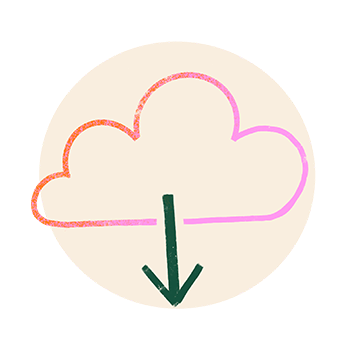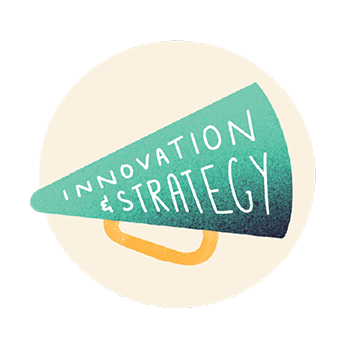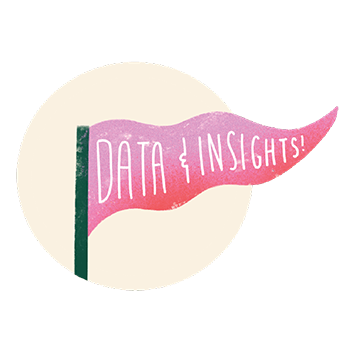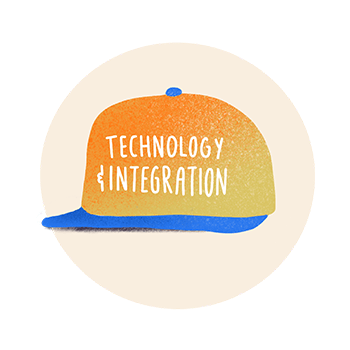
Reinventing Loyalty

Chances are that any hotel, airline, or rental car app on your iPhone has this icon next to it. Your phone saves space by moving your unused (!) apps to the cloud — bad news for these brands, their apps and loyalty programs, which were designed to encourage us to keep them in mind even when out of sight.
The hospitality industry taught us everything about Loyalty. Sadly, the global COVID-19 pandemic has hit the hospitality sector hard, and there are signs that life as we knew it may never return.
- Delta. Delta Airlines was losing $100M a day. In July, Delta was “making good headway,” losing $27M a day while flying 25% of the schedule it flew last summer. Its path to breakeven depends exclusively on an increase in consumer demand, according to Delta’s CEO, Ed Bastian.1 The International Air Transport Association (IATA) — a global body representing 290 airlines — believes that global air travel won’t return to pre-COVID-19 levels until 2024.2
- Las Vegas. In May 2019, more than 3.6M people visited Las Vegas. This past May: 151,000 — a 96% drop from the prior year.3
- American Express. In a normal year, T&E accounts for ~30% of Amex spending. In April, T&E plummeted nearly 100% YoY and was still down almost 70% through the first two weeks of July. Through Q2, Amex’s consumer billed business was off 20% YoY.4
The fact is, most loyalty programs have lost relevance seemingly overnight and are suffering through a crisis of product-market fit.
The demand economics that these programs were built upon don’t exist anymore. There are far fewer customers today who fit (or will fit) the pre-COVID definition of “our most loyal,” so the question for many programs is: how do we redefine who our “most loyal” customers are, and redesign our loyalty program to reward them and profit from their new post-COVID behaviors? Sounds tough, because it is.
It’s not all doom and gloom, however. The pandemic has been the single most effective catalyst for changing consumer behavior, forcing many consumers to trial new digital tools and experiences. Just yesterday, out for brunch with my family, my 72-year-old dad showed me how to pull up the menu on my phone using the restaurant’s QR code. What a world.
As with all profound moments of change, there will be businesses that win and businesses that lose. Cannibals and snacks. The winners will find ways of reinventing themselves and their loyalty programs, drafting behind new consumer behaviors and investments made long ago in omnichannel engagement, digital transformation, and ecommerce integrations. The Loyalty Program will be reborn and, when it is, it will rise in three interconnected movements: Innovation/Strategy, Data/Insights, and Technology/Integration —the three-legged stool of the New Loyalty Program.

Innovation / Strategy
That the world is different now than it was four months ago is obvious. How the world is different is less obvious. Consumer behaviors have changed. The ways we work, learn, shop, stay in touch, relax, and travel have all been transformed by our fears of contracting a virus and our intense exposure to, and adoption of, new digital services. In response, many of us are opting out of products and services that are perceived to have a high risk for COVID-19 exposure and/or finding digital ways to do things that we once did in person. Loyalty programs are not immune. Ask yourself: will you book thirty hotel room nights this year? Next year? How about 75,000 qualifying air travel miles? Probably not. But I’d wager that you’re still planning a vacation with your family, perhaps just somewhere within driving distance and in a vacation rental that’s been thoroughly disinfected.
Let’s start with better understanding post-COVID consumers, and setting a direction for the new Loyalty Program (or a reinvention of an old one). The innovator’s toolkit — modern research methods paired with a disciplined empathy for consumers and a deep understanding of customer lifetime value economics — is perfect for this. What is the post-COVID vacation? The post-COVID business trip? The post-COVID coffee break? The post-COVID happy hour? These end-to-end journeys will need to be completely reimagined and reinvented for a germaphobe consumer, and the loyalty programs meant to drive deeper engagement with these consumers will need to conceptualize and validate new hero elements: partnerships, rewards, and experiences. That loyalty programs needed to balance the emotional with the functional aspects of human (as distinct from corporate) loyalty was a breakthrough insight ten years ago. Today, more than ever, they also need to rethink the customer behaviors that will drive growth, and the program rules that will incentivize the “right” customer (and employee) behaviors and spend. Consider your first post-COVID air travel experience: will you be the flyer in the hazmat suit? Or the flyer going about your business as usual? And how would you like your airline to treat you? The elements of human loyalty that have made these programs so successful — what we long ago coined “The Four Rs,” Respect, Reciprocity, Rewards, and Recognition — will need to manifest in different ways post-COVID. Recognizing a traveler’s post-COVID comfort level and personalizing the social distancing experience to his/her preferences is but one of the new ways in which these programs will need to exist.
Program owners will need to solve for the what and the why of the New Loyalty Program, and then invest in the how. And, of course, the economics of these programs will need to pencil out in ways that reverse COVID-19 losses and lead to business improvement.

Data / Insights
Modern loyalty programs are increasingly delivered through digital channels; what was once a “buy-ten-and-get-your-eleventh-free” card is now a native app. In addition to providing a more elegant and modern customer experience, these apps also help their owner brands to deploy new offerings and experiences to their customers, driving better engagement and, in some cases, actually creating new sources of revenue (e.g. POS financing, basket-increasing/personalized offers).
But what apps do best is create data. The ways in which customers engage with loyalty programs are rich with insights about new customer behaviors into which products and services can be better marketed, bundled, and even created. The New Loyalty Program needs to build a data pipeline, and its operators will need experts that can sift through this data (beyond typical marketing analysis of length of engagement, drop-out rates, etc.) for interesting correlations between customers, products, and behaviors. These insights should then produce experiments that loyalty program operators can run to continuously improve and innovate on the program as a platform for deeper customer engagement and growth.
Loyalty program owner brands will need to understand the privacy rules and policies in place in the municipalities in which they operate, and indeed their own privacy agreements with customers. And they’ll need to stand up (or borrow) a world-class data science capability to mine data for customer behavior insights.

Technology / Integration
Once an ambition for loyalty and its data is set, the digital pieces need to be built, and rarely, if ever, are they being built in a vacuum. The ways in which loyalty programs connect to CRM platforms, ERP systems, and other technologies — internally and across the API economy — are evolving daily. The myriad sources of customer data (customer master, product master, transactional data, actual sales, DR marketing/campaign data, and third party data sources) all need to come together in a solid Customer 360 that the New Loyalty Program can feed from (and contribute to). The ways in which we once thought of media — paid, earned, and owned — now, more than ever, also apply to customer data, and we need to envision the loyalty program’s technology platform to accommodate inputs from and outputs to all three.
To do this, Loyalty program developers will need to understand the landscape of technology accelerators and vendors that might catalyze their ambitions, and build in ways that are secure, connected, and flexible enough to evolve as new technologies, orchestration layers, and customer, employee, and program manager use cases come online.
The great loyalty land-grab is upon us. The COVID-19 pandemic and our new consumer behaviors have broken the customer lifetime value models on which pre-COVID loyalty programs are built. We are in the midst of a Great Resetting of our assumptions about baseline customer behaviors, and the ways in which loyalty programs can incentivize incremental purchasing through engagement. Shrewd program owners are already making tweaks to their programs — easing fees and restrictions, extending deadlines on use-it-or-lose-it benefits, creating new program features, and freezing status earned through 2019 — literally buying time to try and figure out what to do next. The hard truth is that sheltered-in-place consumers will likely spend more time reassessing the brands to which they’re loyal in the next twelve months— more than they have in the past twelve years. The companies that thrive will launch New Loyalty Programs that bring together Innovation/Strategy, Data/Insights, and Technology/Integration to address these new post-COVID consumer (and employee) behaviors. They will iteratively conceptualize and improve new program elements and economics to poach new customers from competitor brands and programs. What will your program do?
If you’d like to discuss the unique dynamics of your program or category, please reach out. We’d love to help.
SOURCES
1 – National Public Radio: All Things Considered. Delta CEO: Airline’s Pandemic Strategy Is “Putting People Over Profits.” July 27, 2020
2 – CNN Travel. Global air travel won’t recover till 2024, says airline body. July 29, 2020
3 – Las Vegas Sun. Vegas, Inc. Weekend won’t be ‘typical’ Fourth of July in Vegas, July 3, 2020
4 – Business Insider. Amex adjusted its reward offerings to bounce back from the drop in travel and entertainment spending. July 28, 2020.
The information contained herein is provided for general informational purposes only and does not create a professional or advisory relationship. It is provided without warranty or assurance of any kind.
© Copyright 2020 Capgemini America, Inc.

Alex Stock is a Vice President at frog and a member of the Capgemini Invent NA Management Committee, frog’s parent company. In his dual role, he helps to envision change across organizations—imagining, designing and building the products, services and business models of the future—by leveraging the combined capabilities of frog and other areas of Capgemini. Alex is an accomplished Innovator. He has a 10-year track record of identifying undiscovered market opportunities and launching new products, experiences and businesses that capture them, most recently co-leading Fahrenheit 212 in North America, now a part of frog. He is a U.S. patent holder and has helped clients to commercialize innovation in nearly every industry. Alex holds an MBA from Harvard Business School and a B.A from U.C. Berkley.
We respect your privacy
We use Cookies to improve your experience on our website. They help us to improve site performance, present you relevant advertising and enable you to share content in social media. You may accept all Cookies, or choose to manage them individually. You can change your settings at any time by clicking Cookie Settings available in the footer of every page. For more information related to the Cookies, please visit our Cookie Policy.